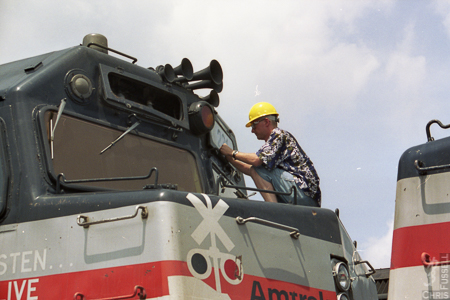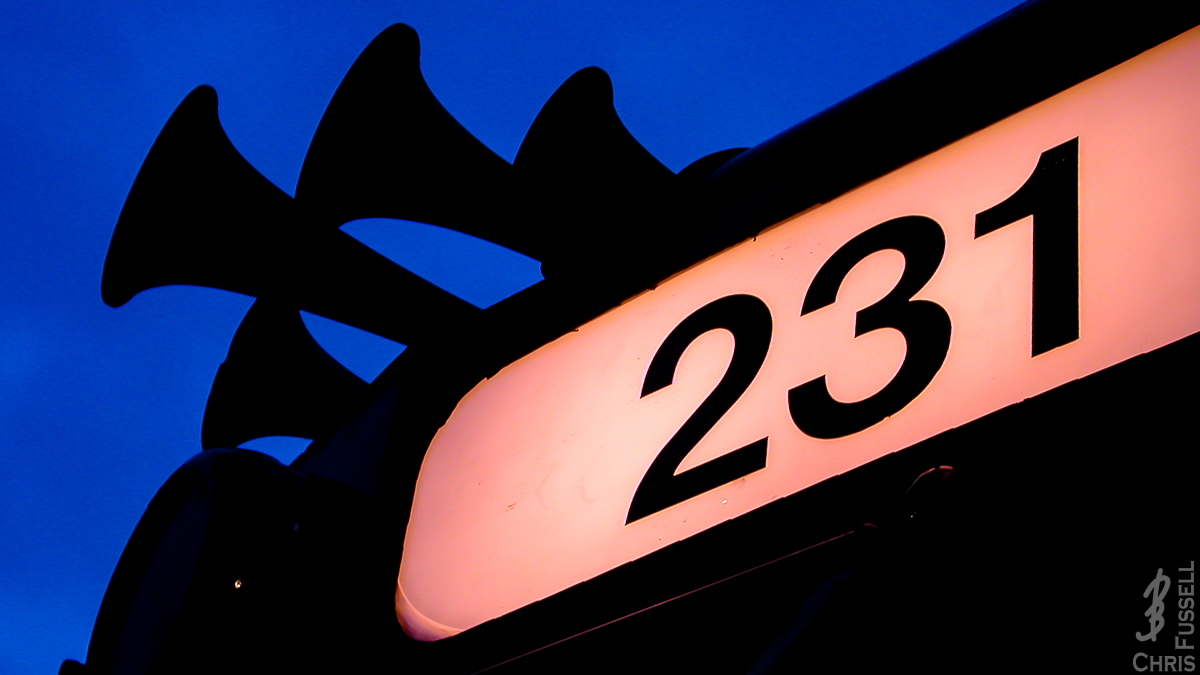
 |
 |
 |
 |
Saving Amtrak 231 From Scrap at Beech Grove, Indiana
Amtrak F40 231 officially retired from service in November 2001; it was recalled to Beech Grove, Indiana along with the rest of the F40s in Amtrak's fleet for disposition. This gallery contains photos from several trips over the course of a year, a documentation of 231's chapter closing at Amtrak, and beginning a new chapter in preservation.
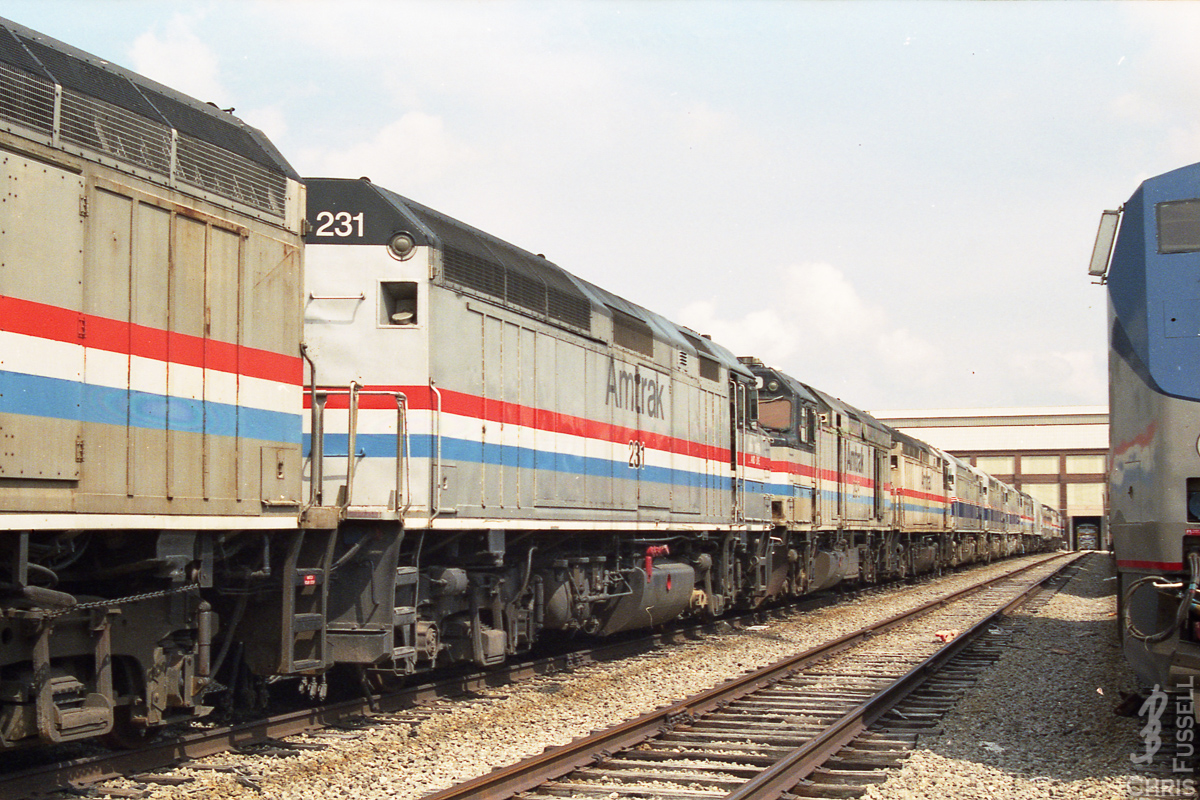 Amtrak 231 among over 100+ retired F40s at Beech Grove, Indiana. |
||
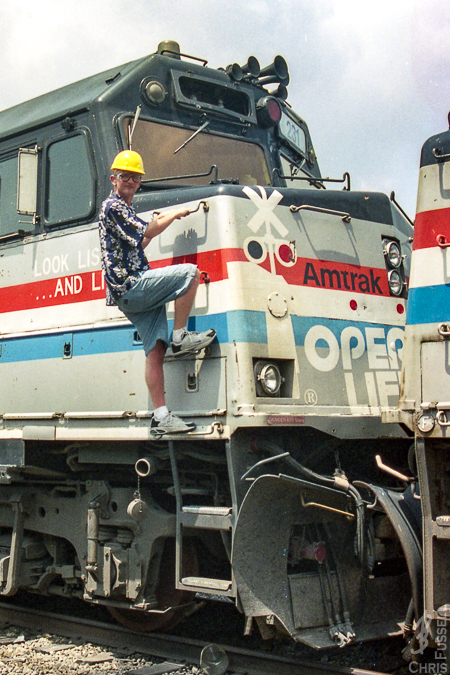 Chris officially claiming 231 for preservation. |
The other numberboard went missing during its last trip on the San Joaquin between Bakersfield and Oakland, CA; It likely fell out and is laying in the dirt along the route. |
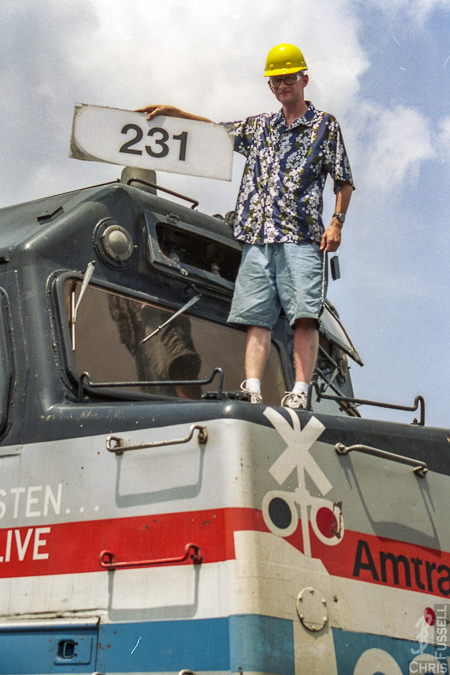 The photo that sparked the fundraiser to save 231. |
Why the #231? By: Christopher Fussell I am often asked why I wanted a certain F40 locomotive from a lot containing over 100 F40s that had at least a dozen units that were in better mechanical and cosmetic condition; simply put, I grew up with the 231, and it made an impression on me during those adolescent years. I had traveled on Amtrak numerous times with family and friends, and when I took my first solo train ride during my early teen years, I studied the locomotives up close before and after riding that San Diegan train, noting that 231 was one of two units powering it. I continued to see 231 regularly when it passed through Portland, Oregon during my high school years, and even more so when I got an apartment of my own next to Portland Union Station. By that time, the number of F40s in service on the west coast had dwindled to a handful. My interest in transportation systems and railroads had been building for several years before I graduated from high school, and I began volunteering for a local steam preservation organization at the Brooklyn Roundhouse in 2000, which involved three steam locomotives, several diesels and a fleet of passenger cars. It was at the roundhouse where I learned the art of restoration, resurrection, and operation of such historic railroad equipment, and in working with fellow volunteers, I learned of their passion to preserve such artifacts for future generations. Some of that passion derived from past efforts (or lack thereof) to preserve significant railroad equipment that ultimately fell through the cracks; "it should have been saved;" "somebody should save it;" "why didn't anyone save it?" These conversations at the lunch table, along with helping others work toward a common goal in rail preservation, made me wonder what my passion would ultimately be when I reached the age of my mentors, ironically, while locomotive 231 continued to operate through the Brooklyn Yard, sometimes with volunteers working as engineer of that run who'd play a tune with the horn for everyone at the Roundhouse. As I became more involved with transit systems, and volunteering for the SP 4449 steam locomotive, I figured my passion would lie in reviving former interurban routes with new light-rail trains, and helping keep steam locomotives alive for generations to come. One evening in May 2001, we had moved the 4449 from the roundhouse to Union Station for a train excursion down the Columbia River Gorge the next day; I was ecstatic to embark on what would be my first experience with high speed mainline steam (on the crew nonetheless) through one of the most beautiful parts of the country. After wrapping up a few loose ends at work the night before the big steam trip, I was on my way home when I encountered three teenagers who proceeded to knock me to the ground, and stomp on my head and torso, during this act of robbery. I ended up in the hospital with severe bruising and fractures, and it took nearly a week until I recovered well enough to walk straight again. Bootprint marks remained on my face for several weeks after that. The three teenagers were caught, thankfully; when the police caught up with them, they were found with not only my belongings, but also other victims', an indication that they were involved in a string of numerous robberies and assaults over a period of several months. I was lucky to be alive. When I returned to my apartment the following week, I continued to recover from my injuries, but what I was also really upset about was missing the steam excursion I was set to go on the morning after the assault. I was livid. This was my passion the muggers toyed with, and I was determined to fulfill it to the maximum by doing everything I could while they sat in their 8x9' jail cell. I promised I would go on as many steam excursions as able, to get involved in various transit advocacy groups, and to live to the fullest. The only question was: where do I start? As I stood on the balcony of my apartment overlooking Union Station, I could hear the Coast Starlight train approaching, and as the lead of the train popped into view, locomotive 231 rolled forward in charge with its bell clanging. Get busy living, they say, so I picked up a light backpack, got my ticket across the station, took pictures and boarded what would end up being the first ride toward reviving my life's passion. For the next six months, I coordinated my lunch breaks or evening activities to intercept or ride the 231 as it passed through town, including the Brooklyn yard where I continued to participate in restoration projects. When word spread on the internet in November 2001 that 231 had seen its last mile of service on Amtrak, my friends at the Roundhouse encouraged me to "go save it". It was a rather daunting idea, since I was only 19 years old, and didn't have the means to willy-nilly go pick up a train locomotive that could run into the hundreds of thousands dollars. I thought I should go see it one last time before it was to be scrapped, so I took a trip to Amtrak's Beech Grove facility in July 2002 and spent the afternoon going over and through the 231. I had my first photo taken with the locomotive as pictured here, while climbing up to claim the numberboard. After meeting with friends, and the employees there, I became more determined to see if preserving it was truly feasible, and communicated my interest with Amtrak. As a publicly-subsidized corporation, it was difficult for Amtrak to make outright donations, but they were willing to consider a reasonable offer. In late 2002, I entered a preliminary agreement with Amtrak to purchase the locomotive, pending fundraising efforts. Over $30,000 was raised in ten days, and the purchase was completed on December 5th. Locomotive 231 arrived at the Brooklyn Roundhouse on April 25, 2003, ten years to the day following my father's passing, and this newfound adventure was just the beginning! |
||
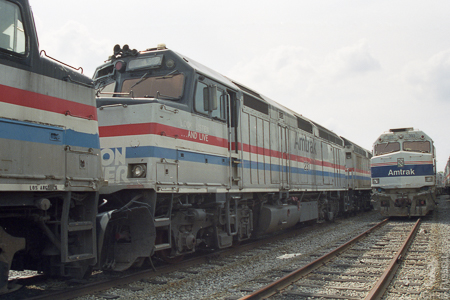 231 at Beech Grove with 393, a F40 now operating on the Panama Canal. |
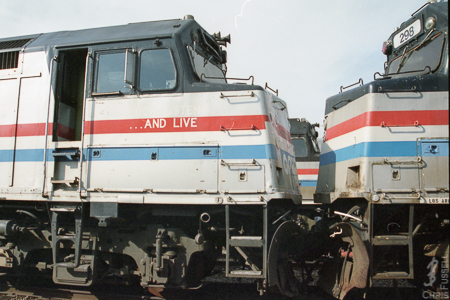 231 coupled up to 298 on the scrap line. |
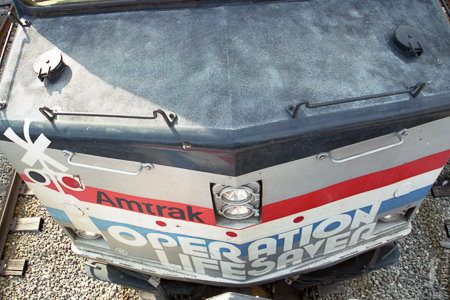 Operation Lifesaver decal as seen from above. |
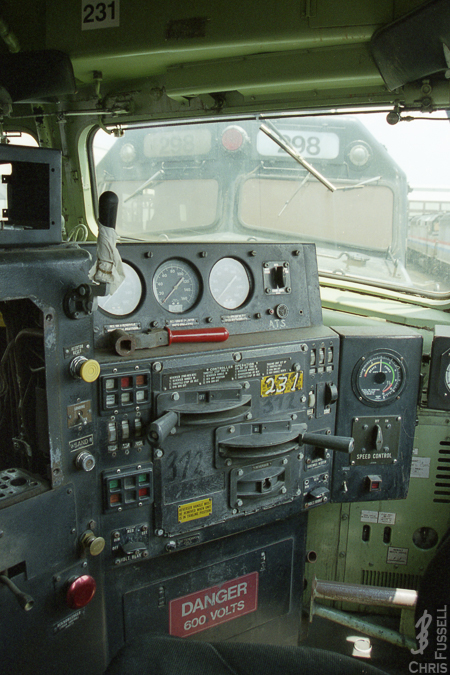 Cab of 231; note controls were swapped out with 372 at some point. |
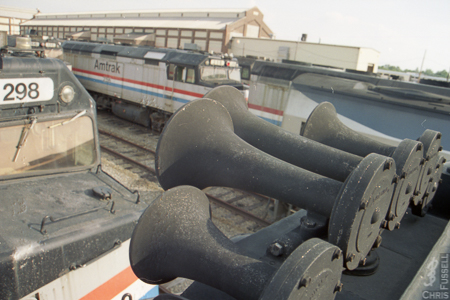 231's K5LA 5-chime horn. |
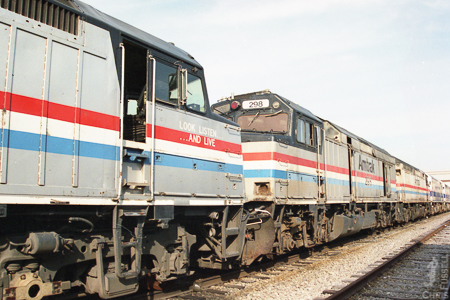 231 and 298 among other F40s on the scrap line. |
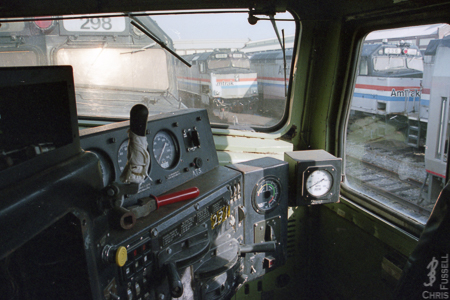 A view of 231's cab; note cloth wrapped around horn valve (for comfort). |
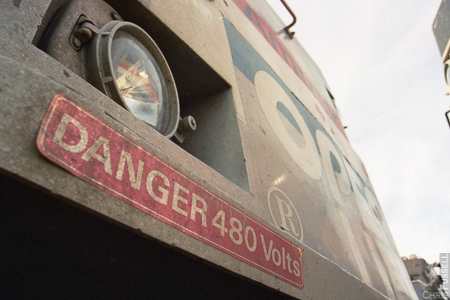 Head-end power cables and receptacles. |
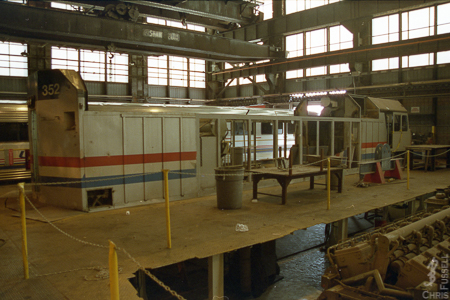 Inside one of the shops were several F40s undergoing work. |
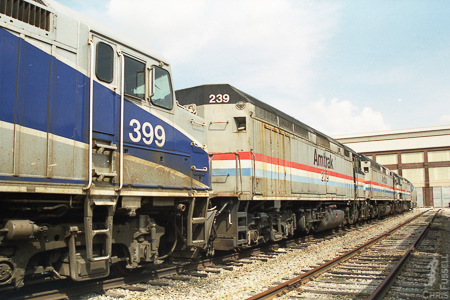 Surfliner-painted 399 now works on Music City Star commuter trains in Nashville, TN. |
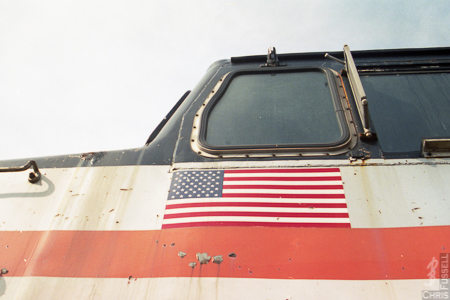 233's American Flag under the cab window. |
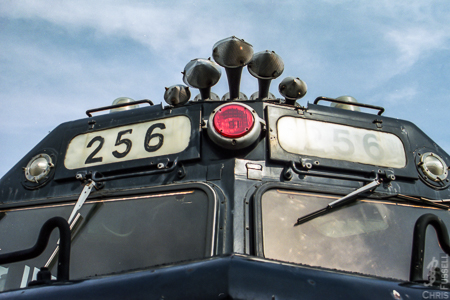 256's hand-drawn numberboard and snow cones on the horn. |
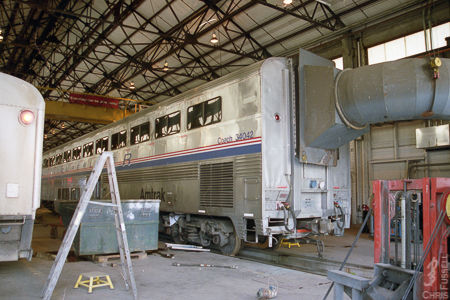 Regular maintenance includes vacuuming out the entire car. |
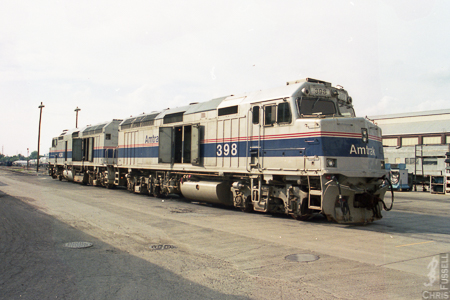 Two F40s in running condition to shuttle cars back and forth to Chicago. |
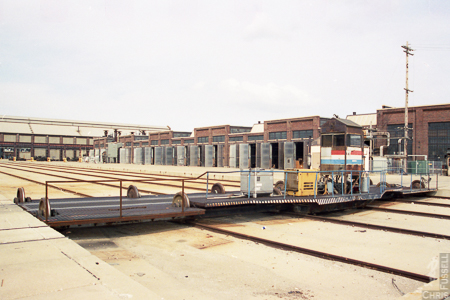 A transfer table capable of moving locomotives to different shop tracks. |
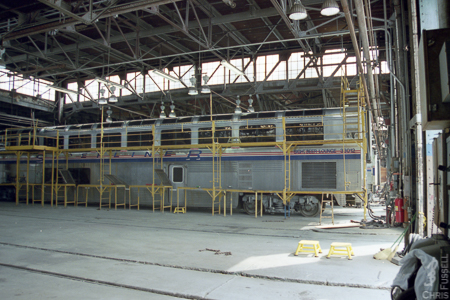 A sightseer lounge car being serviced. |
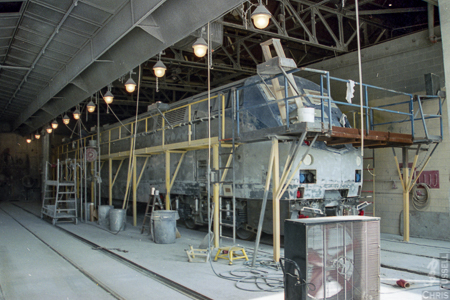 P42 locomotive #65 being sanded and repainted. |
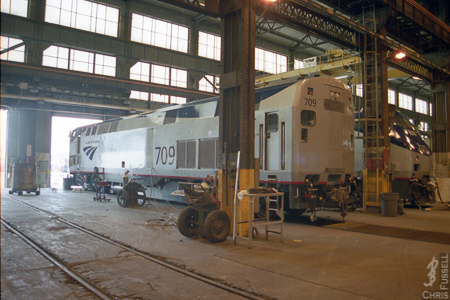 P32ACDM locomotive in fresh paint and being prepped for service. |
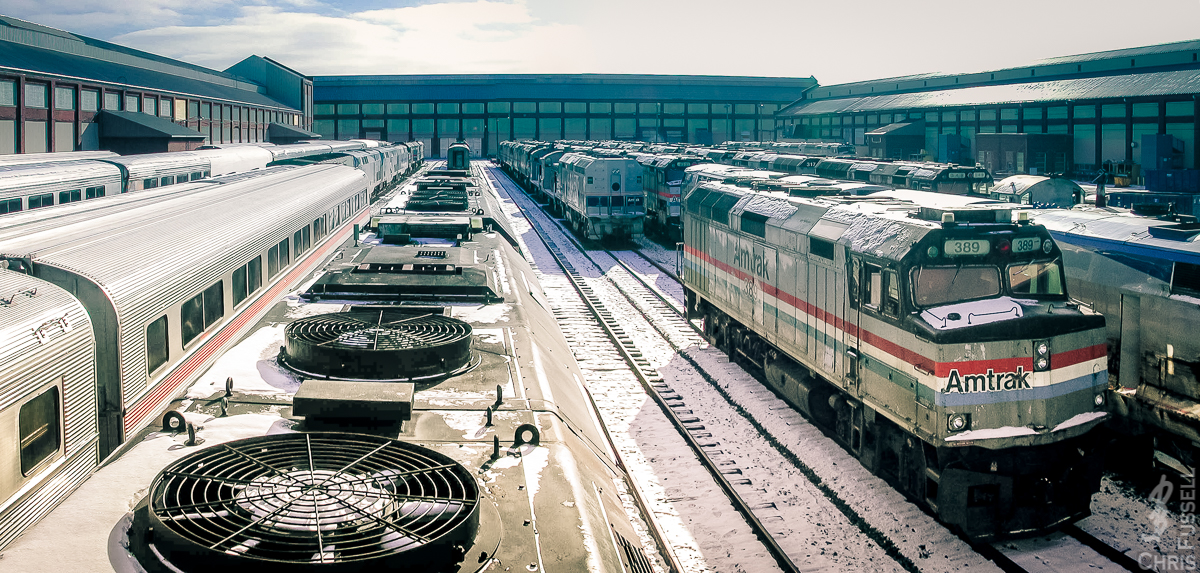 |
||
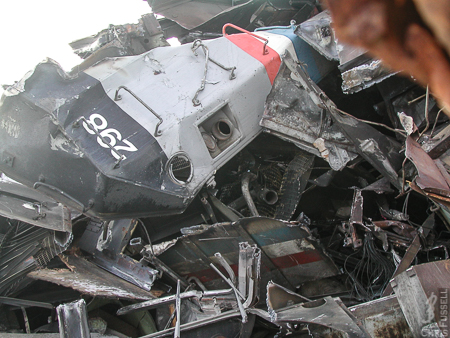 As shown earlier, 231 was previously coupled to this locomotive on the scrap line. |
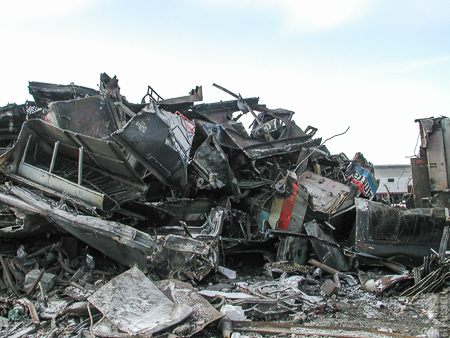 The purchase of 231 was mere weeks away from this scrap pile. |
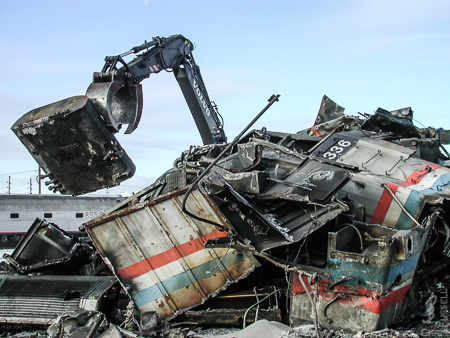 The end of the line for many F40s. |
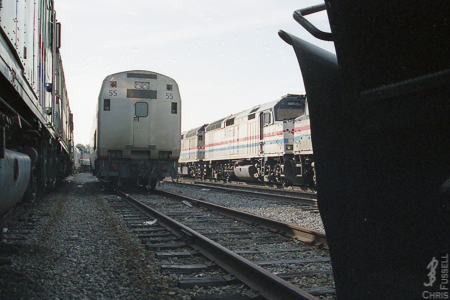 |
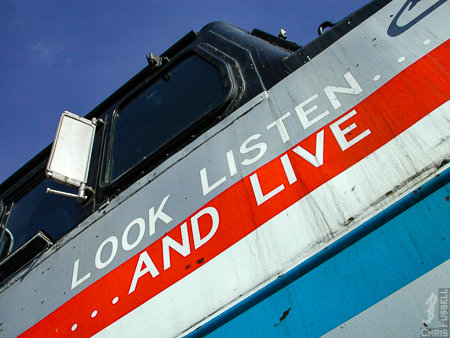 |
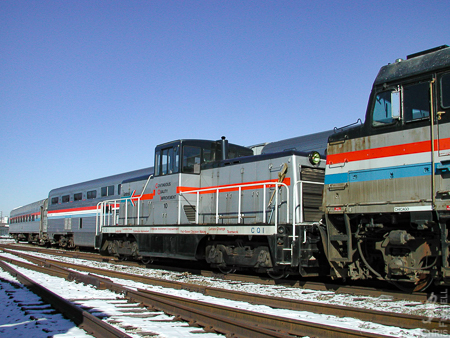 |
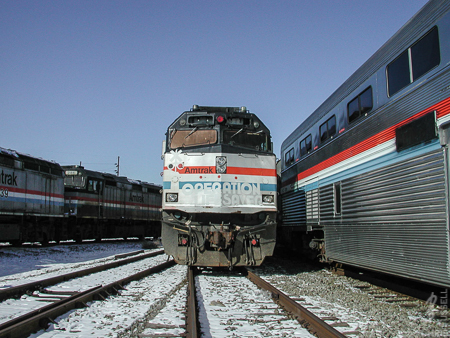 |
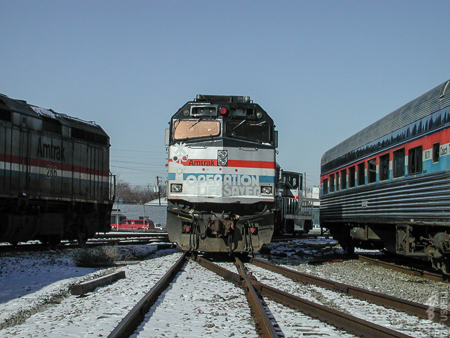 |
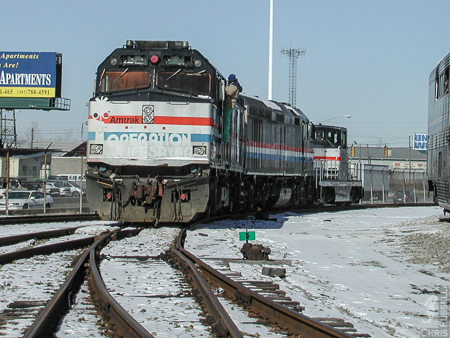 |
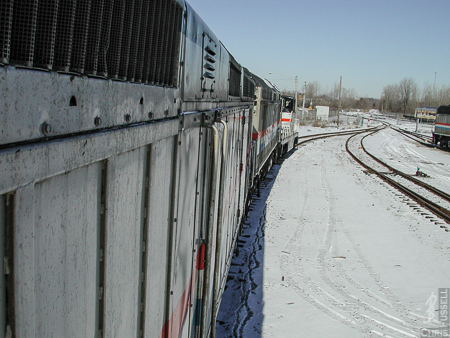 |
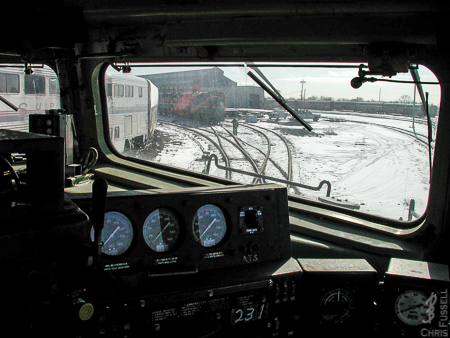 |
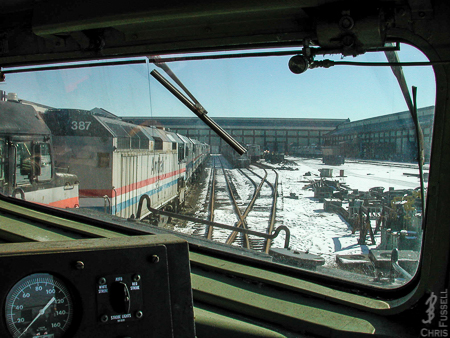 |
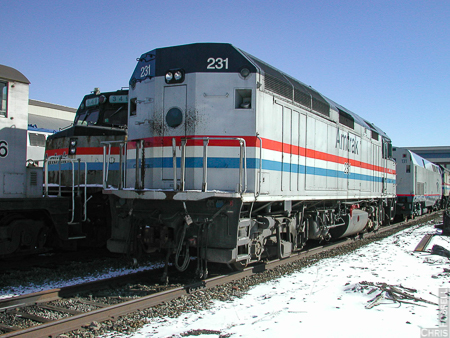 |
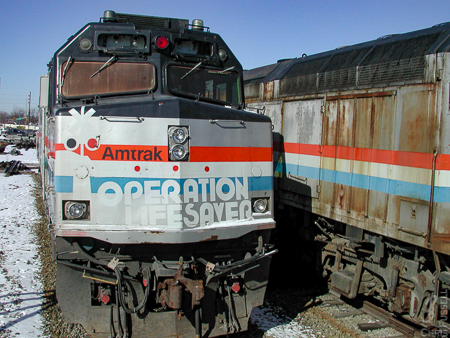 |
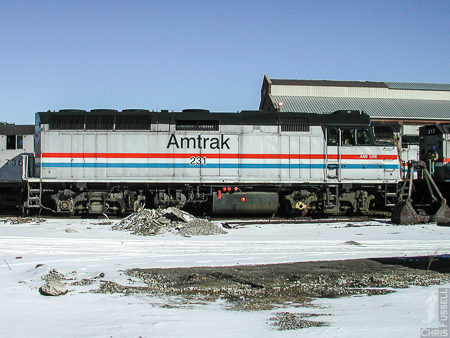 |
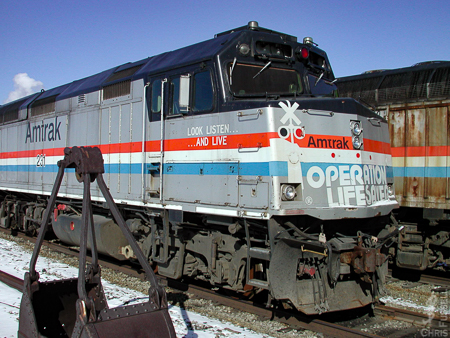 |
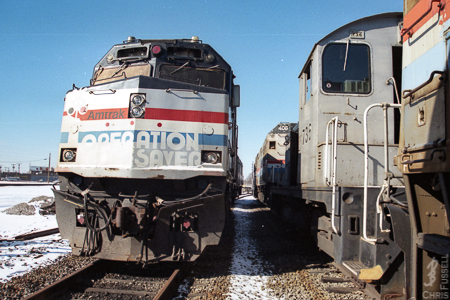 |
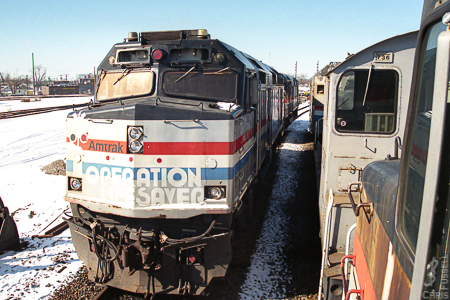 |
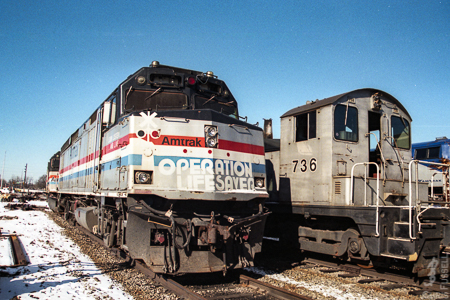 |
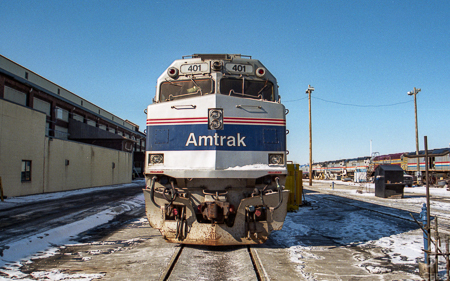 |
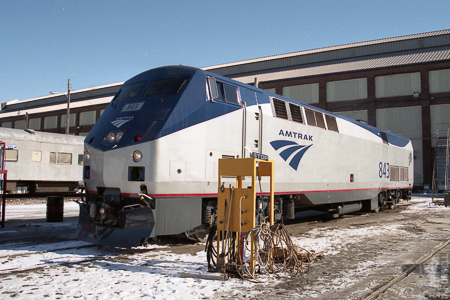 |
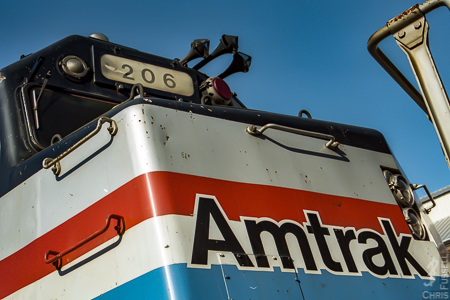 |
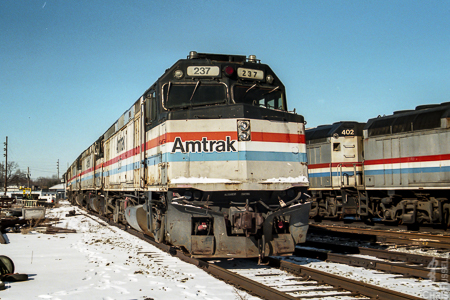 |
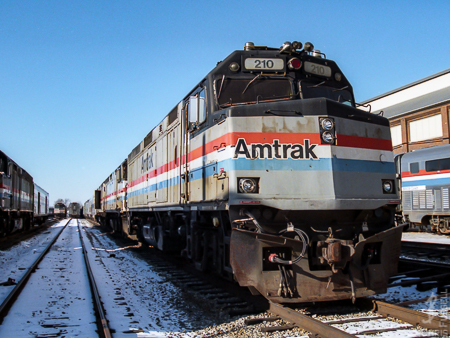 |
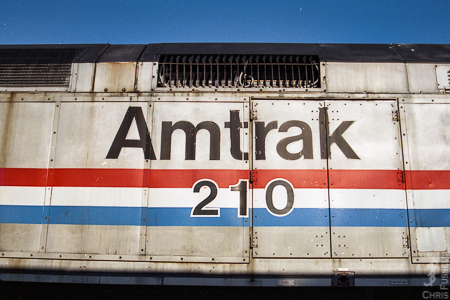 |
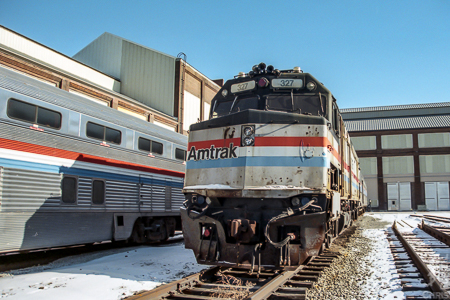 |
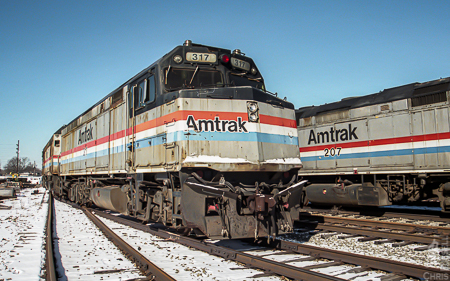 |
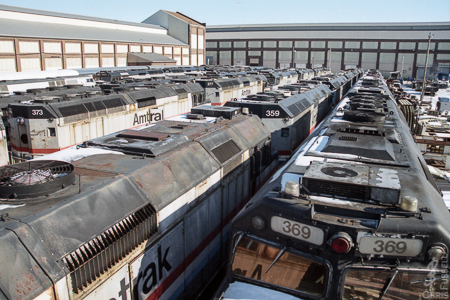 |
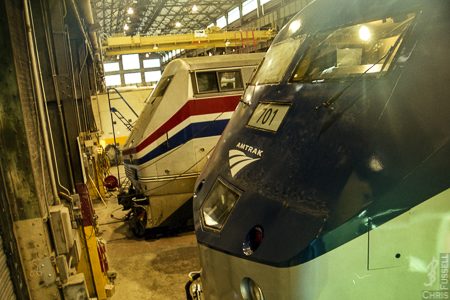 |
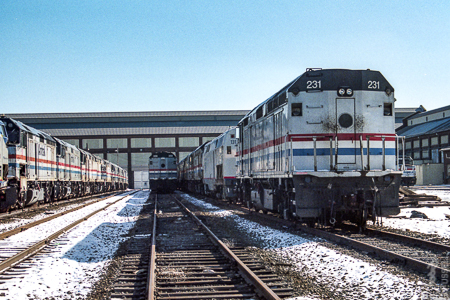 |
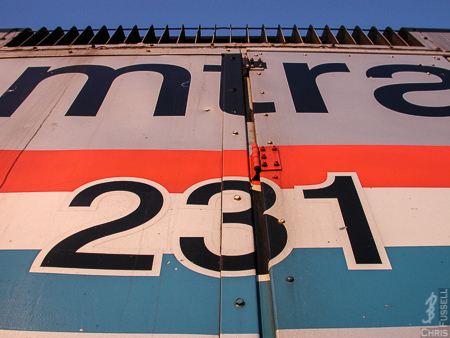 |
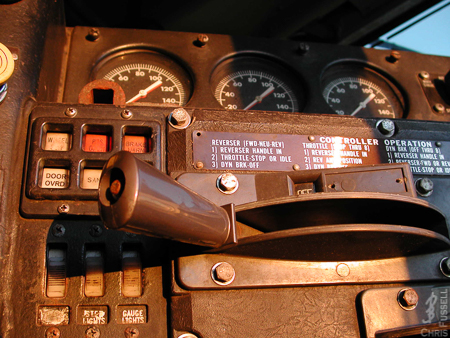 |
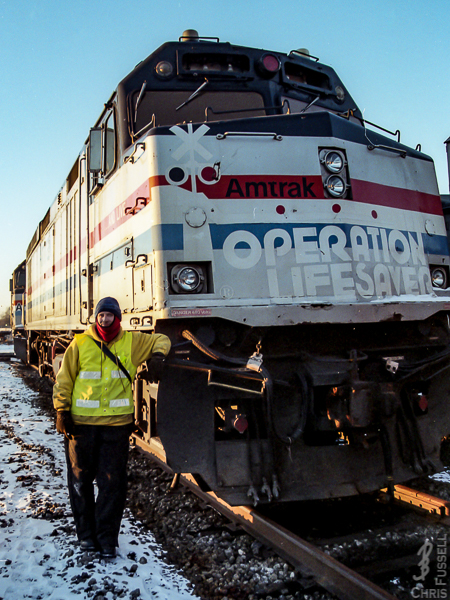 |
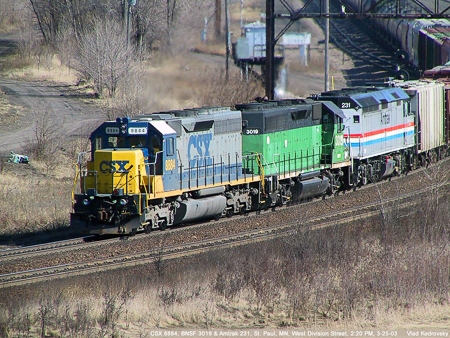 231 in transit on CSX and BNSF. |
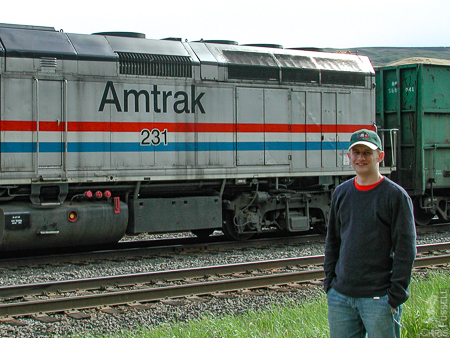 Nick White and I intercepted 231 at Wishram, Washington. |
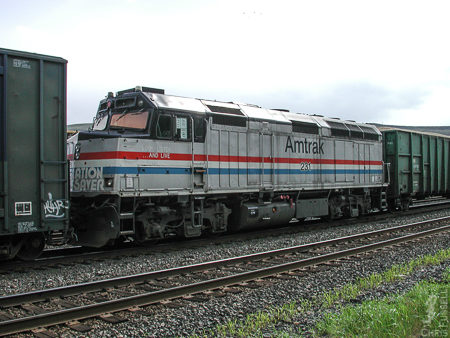 Wishram, Washington. |
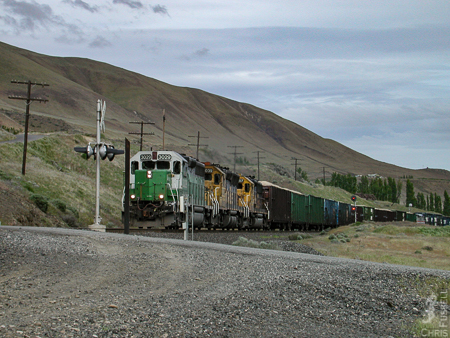 Freight train with 231 further back entering Columbia River Gorge. Freight train with 231 further back entering Columbia River Gorge. |
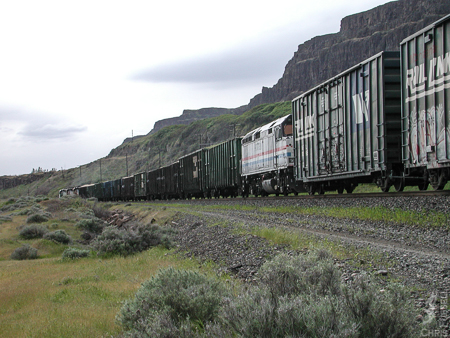 231 getting closer to home. |
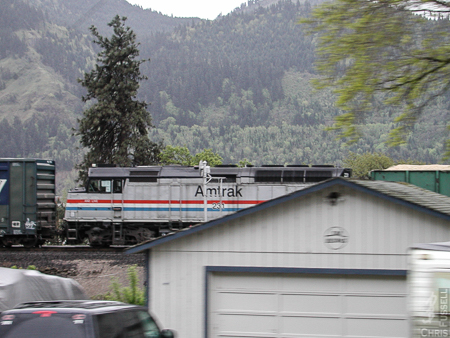 Passing a searchlight signal in Columbia River Gorge. |
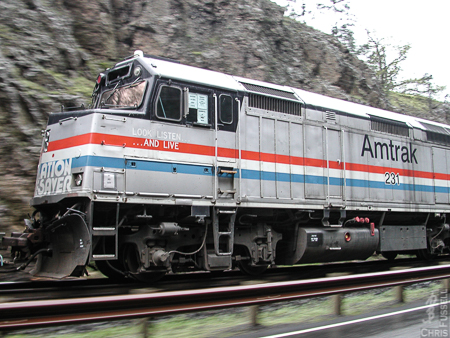 Pacing alongside at 60 mph. |
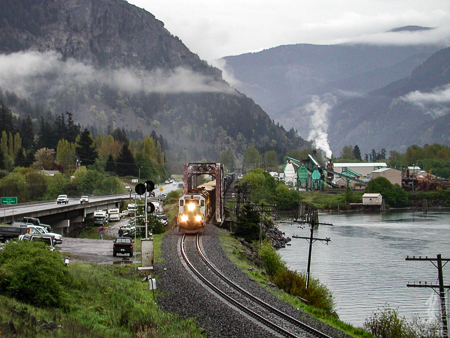 Passing through Home Valley. |
 Passing through Home Valley. |
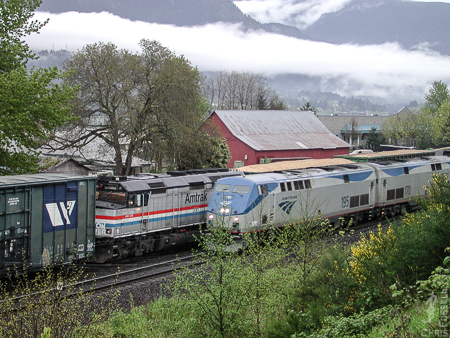 Amtrak's Empire Builder passing the 231 in Skamania. |
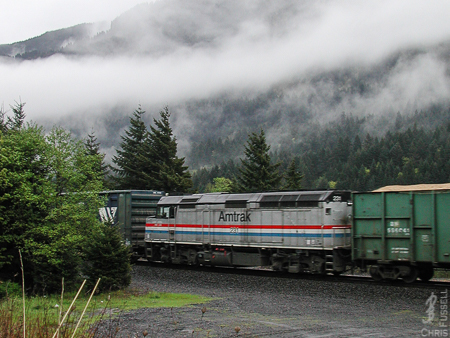 Passing through Bonneville. Passing through Bonneville. |
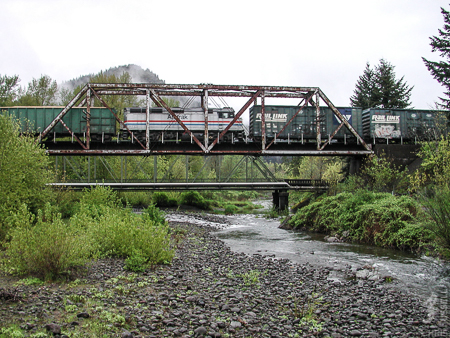 Passing through Bonneville. |
 Passing through Washougal. |
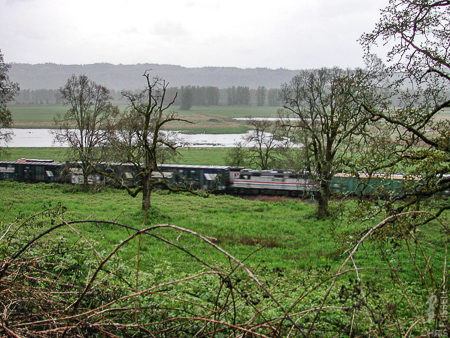 Passing through Washougal. |
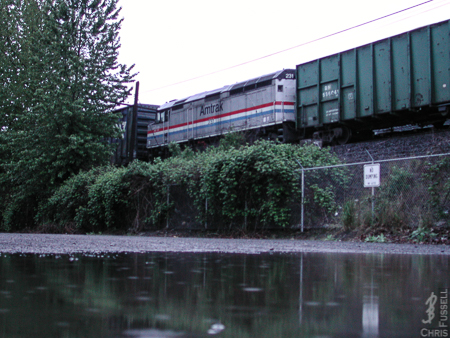 Passing through Vancouver. |
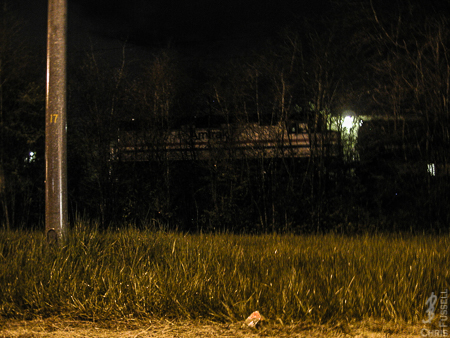 Following 231 on the Portland & Western in Beaverton, Oregon. |
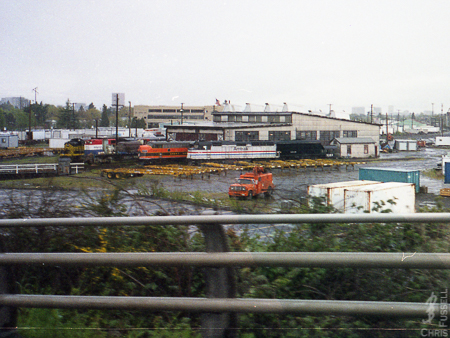 At first light, the 231 has been delivered! |
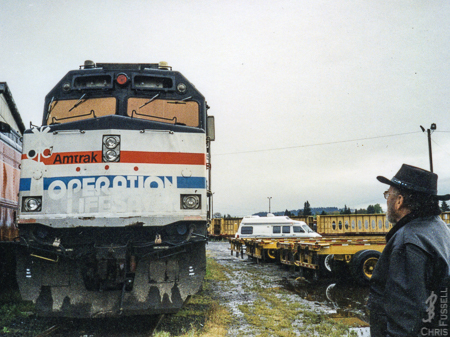 231 and my Grandpa looking on. |
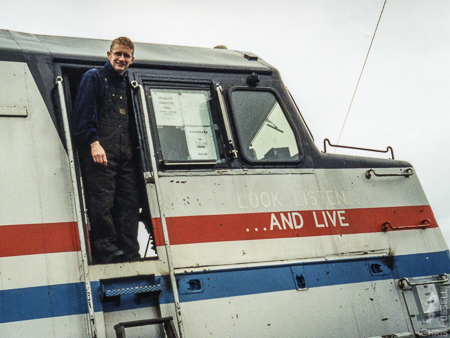 Setting up 231 for today's work party. |
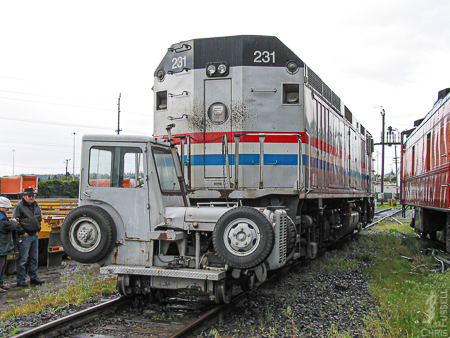 Trackmobile now coupled for the move. |
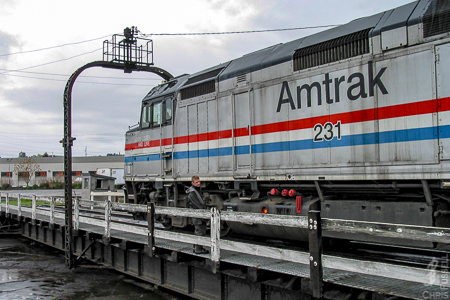 Easing onto the Brooklyn turntable. |
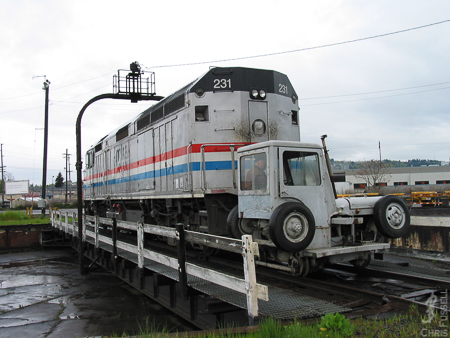 First trip on the Brooklyn Roundhouse turntable. |
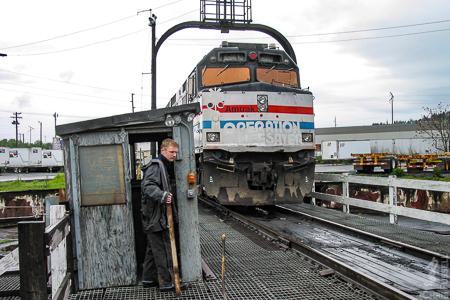 Spinning around on the Brooklyn Roundhouse turntable. |
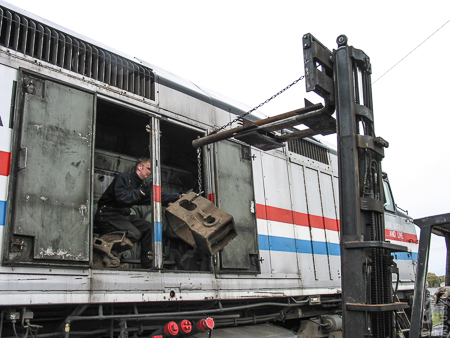 Unloading spare parts for NKP PA #190. |
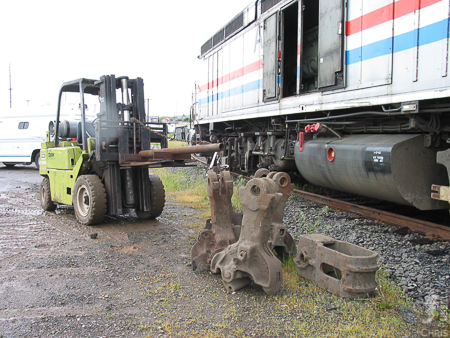 Unloading couplers for the NKP PA #190. |
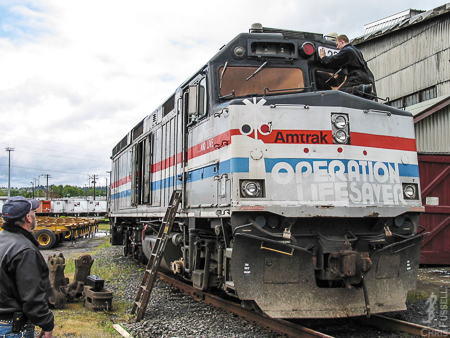 Reinstalling numbers. |
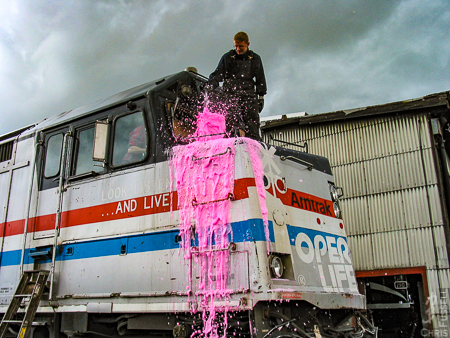 Washing away the grime. |
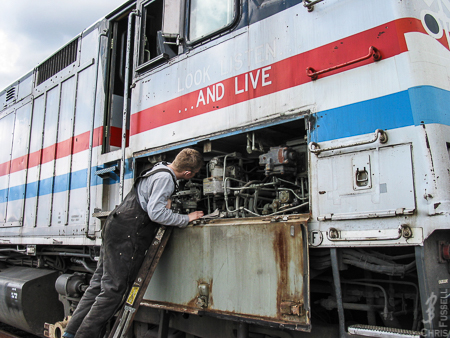 Working on plumbing. |
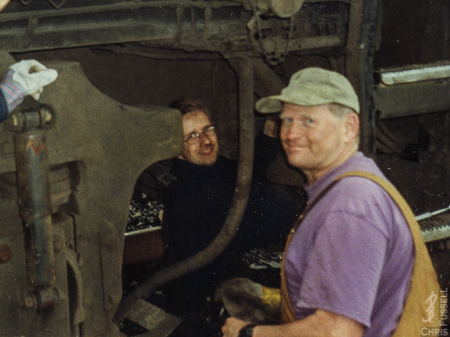 Chris and John Magnusson. |
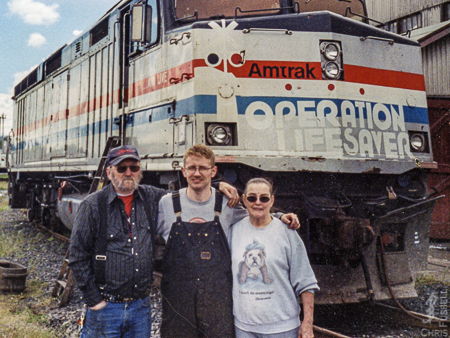 My grandparents: couldn't have done this without them. <3 |
Home at last! |
||
